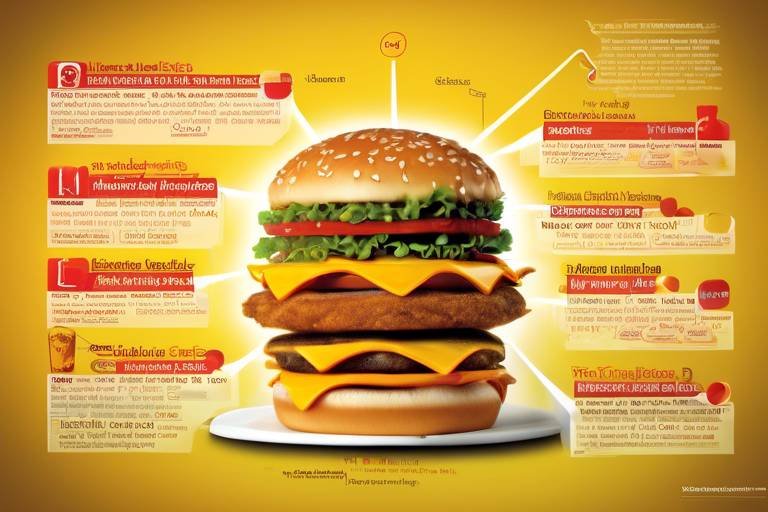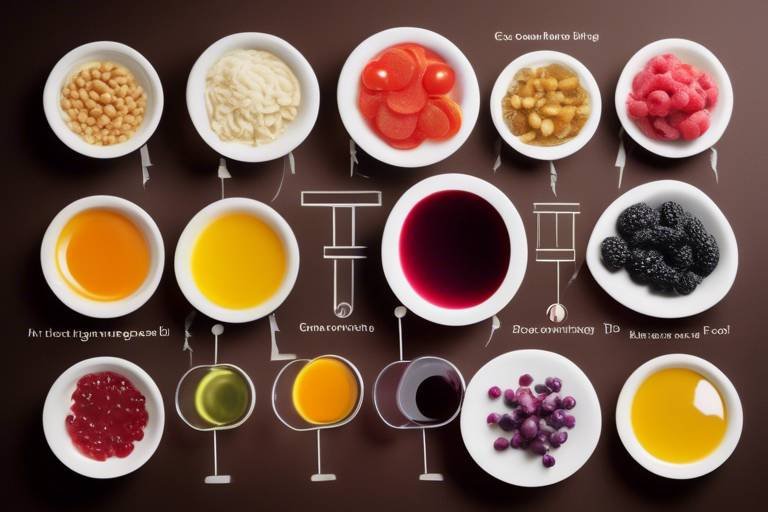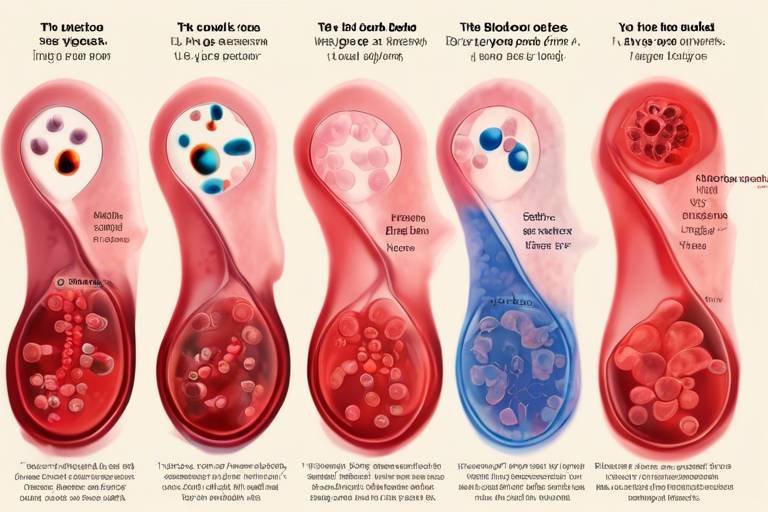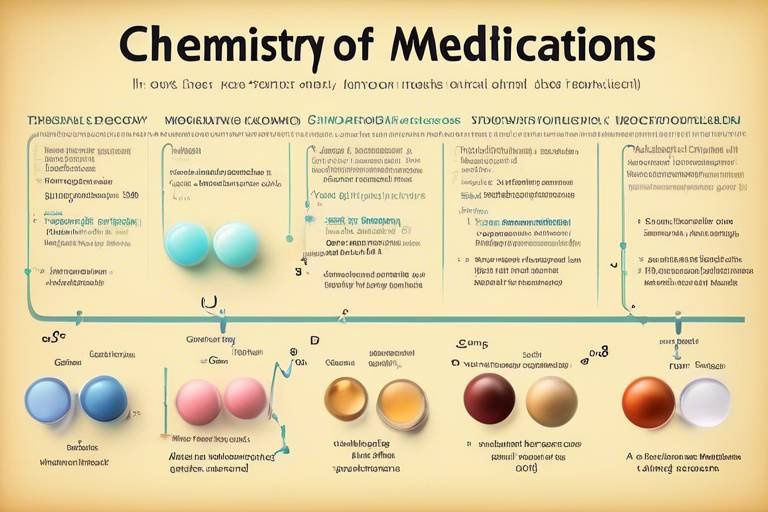The Chemistry of Fast Food - Understanding Ingredients
Fast food is a staple in many diets around the world, known for its convenience and quick service. But have you ever stopped to wonder what goes into your favorite burger or fries? The truth is, the chemistry behind fast food is as fascinating as it is complex. Ingredients are carefully selected not just for their taste, but also for their ability to enhance flavor, maintain freshness, and ensure safety. In this article, we will delve into the various chemical components found in fast food, exploring their roles, effects on health, and the science behind flavor and preservation. Understanding these ingredients can empower you to make more informed choices about what you eat.
Food additives play a crucial role in enhancing flavor, texture, and shelf life. They are the unsung heroes of the fast food industry, working behind the scenes to ensure that every bite is as delicious as the last. Common additives such as artificial flavors, coloring agents, and emulsifiers are often used to improve the sensory experience of fast food. For instance, artificial flavors can mimic the taste of fresh ingredients, while coloring agents can make food look more appetizing. However, it’s essential to consider the potential health implications of these additives. Some studies suggest that certain artificial ingredients may lead to adverse health effects, prompting consumers to question what they are really eating.
Preservatives are essential for extending the shelf life of fast food, allowing it to stay fresh longer without spoiling. They help prevent the growth of harmful bacteria and molds, ensuring that the food remains safe to eat. Some common preservatives include sodium benzoate, potassium sorbate, and calcium propionate. While these substances are effective at prolonging freshness, they also raise questions about their impact on health. Research has shown that certain preservatives can cause allergic reactions or other health issues in sensitive individuals.
When it comes to preservatives, there is an ongoing debate between natural and synthetic options. Natural preservatives, such as vinegar and salt, have been used for centuries and are often perceived as safer alternatives. On the other hand, synthetic preservatives are engineered to be more effective and cost-efficient. While both types serve the same purpose, consumer preferences often lean toward natural options, driven by a desire for cleaner labels and healthier choices. This section will compare their effectiveness, safety, and the growing trend of consumers seeking transparency in food labeling.
Preservatives can significantly influence the overall flavor profile of fast food. They can enhance or alter the taste and aroma, impacting the consumer experience. For example, some preservatives may impart a slightly salty or sour flavor, while others might have little to no effect on taste. Understanding how these chemicals interact with the food can help consumers appreciate the complex flavors of their favorite fast foods. It’s like a hidden orchestra playing in the background, each ingredient contributing to the symphony of flavors.
While preservatives are necessary for food safety, some of them raise health concerns. Long-term consumption of certain preservatives found in fast food has been linked to various health issues, including hyperactivity in children, allergic reactions, and even cancer in extreme cases. It’s essential to stay informed about what you’re consuming. This part of the article will address potential risks and encourage readers to consider moderation when indulging in fast food.
Understanding the regulations surrounding food preservatives is vital for consumer safety. Health authorities, such as the FDA and EFSA, set guidelines to ensure that preservatives used in food products are safe for consumption. These regulations are based on extensive research and testing, aimed at protecting public health. This section will outline the key guidelines and what they mean for consumers, helping you navigate the often-confusing world of food labeling.
Flavor enhancers are widely used in fast food to boost taste and create an unforgettable eating experience. One of the most common flavor enhancers is Monosodium Glutamate (MSG), which is celebrated for its ability to intensify savory flavors. However, the ongoing debate regarding its safety has made many consumers wary. Understanding the chemistry behind MSG and its effects on the palate can help demystify its role in fast food.
MSG is a well-known flavor enhancer in fast food, often used to create that irresistible umami flavor. Chemically, it is the sodium salt of glutamic acid, an amino acid naturally found in many foods. While many enjoy the enhanced flavor it brings, some individuals report adverse reactions, sparking controversy over its safety. This section will explore the chemical properties of MSG, its widespread usage, and the ongoing debate surrounding its health effects.
Natural flavor compounds are derived from real food sources, providing a more authentic taste experience. These compounds are extracted from fruits, vegetables, herbs, and spices, allowing fast food manufacturers to create appealing flavors without relying on synthetic additives. This part will examine how these natural flavors are extracted and utilized in fast food, highlighting the growing trend of consumers seeking more wholesome options in their meals.
- What are food additives? Food additives are substances added to food to enhance flavor, appearance, or shelf life.
- Are preservatives safe to eat? Many preservatives are considered safe in moderation, but some may pose health risks with long-term consumption.
- What’s the difference between natural and synthetic preservatives? Natural preservatives come from natural sources, while synthetic preservatives are chemically manufactured.
- How do flavor enhancers work? Flavor enhancers, like MSG, enhance the natural flavors of food, making them more savory and appealing.

Understanding Food Additives
This article delves into the various chemical components found in fast food, exploring their roles, effects on health, and the science behind flavor and preservation.
When you think of fast food, what comes to mind? Juicy burgers, crispy fries, and that irresistible aroma wafting through the air. But have you ever paused to consider what makes these foods taste so good and last so long? The secret lies in food additives. These are substances added to food to enhance its flavor, texture, and shelf life, making them essential in the fast food industry. From the moment you unwrap your burger to the last bite of your fries, additives are working behind the scenes to ensure you have a satisfying experience.
Food additives can be categorized into several types, each serving a distinct purpose. For instance, flavor enhancers amplify the natural flavors of food, while emulsifiers help blend ingredients that normally don't mix, like oil and water. Additionally, stabilizers maintain the consistency of food products, preventing them from separating. This is particularly important in sauces and dressings, where a smooth texture is key to customer satisfaction.
However, the use of additives is not without controversy. Some people are concerned about the health implications of consuming products laden with chemicals. For example, certain additives have been linked to allergic reactions or other health issues. It’s essential to keep in mind that while many additives are considered safe in moderation, the long-term effects of consuming them regularly can still be a cause for concern. The debate surrounding food additives often boils down to a few key questions:
- Are these additives necessary for food safety?
- What are the potential health risks associated with specific additives?
- How do consumers feel about the presence of these chemicals in their meals?
To give you a clearer picture, here’s a table summarizing some common food additives found in fast food:
| Additive | Purpose | Potential Health Concerns |
|---|---|---|
| High Fructose Corn Syrup | Sweetener | Linked to obesity and metabolic issues |
| Sodium Nitrite | Preservative | Possible carcinogen when consumed in large amounts |
| Calcium Propionate | Preservative | May cause digestive issues in sensitive individuals |
| Artificial Colors | Color enhancement | Linked to hyperactivity in children |
In conclusion, while food additives play a vital role in the fast food industry, their impact on health and consumer perception cannot be overlooked. As we continue to enjoy our favorite meals, it’s crucial to stay informed about what goes into our food and make choices that align with our health goals. So next time you indulge in a quick meal, take a moment to appreciate the science that makes it all possible!
What are food additives?
Food additives are substances added to food to enhance its flavor, texture, and shelf life. They include preservatives, flavor enhancers, and emulsifiers.
Are food additives safe?
Most food additives are considered safe when consumed in moderation. However, some may pose health risks, especially with long-term consumption.
How can I identify food additives in fast food?
Food additives are typically listed in the ingredients section on packaging. Familiarizing yourself with common additives can help you make informed choices.
Can I avoid food additives in fast food?
While it’s challenging to find fast food without additives, some restaurants offer options made with natural ingredients. Look for places that prioritize fresh, whole foods.

The Role of Preservatives
Preservatives are like the unsung heroes of the fast food world. They work tirelessly behind the scenes, ensuring that your favorite burger or fries can withstand the test of time—at least on the shelf! These chemical compounds are essential for extending the shelf life of fast food items, preventing spoilage, and maintaining quality. Imagine biting into a burger that’s been sitting out for days; yikes! Preservatives help to avoid that culinary disaster by inhibiting the growth of bacteria, molds, and yeasts that can cause food to spoil.
There are two primary categories of preservatives: natural and synthetic. Each type has its own unique set of characteristics and applications. Natural preservatives, such as salt, vinegar, and certain essential oils, often come from plant or animal sources. They can be a great option for those looking to avoid synthetic chemicals. On the other hand, synthetic preservatives, like sodium benzoate and potassium sorbate, are man-made and often more effective at preserving food over extended periods.
But what exactly do these preservatives do? Let’s break it down:
- Prevent spoilage: By inhibiting microbial growth, preservatives keep food safe and edible longer.
- Maintain flavor and color: They help to retain the original taste and appearance of food, ensuring that your fries remain golden and crispy.
- Enhance texture: Some preservatives can improve the mouthfeel of food, making it more enjoyable to eat.
While preservatives are necessary for food safety, their use has sparked a fair amount of debate. Some consumers are concerned about the potential health implications of consuming synthetic preservatives over the long term. Studies have suggested that certain preservatives may be linked to health issues, including allergic reactions and hyperactivity in children. However, it’s essential to note that regulatory bodies like the FDA have established guidelines to ensure that these substances are used safely and effectively in food products.
In conclusion, preservatives play a crucial role in the fast food industry by enhancing safety and extending shelf life. Understanding their function can help consumers make informed choices about the foods they consume. So, the next time you enjoy a quick meal, remember the chemistry working behind the scenes to keep your food fresh and flavorful!
- What are preservatives? Preservatives are substances added to food to prevent spoilage and extend shelf life.
- Are natural preservatives safer than synthetic ones? While natural preservatives are often perceived as safer, both types undergo rigorous testing for safety.
- How can I avoid preservatives in my diet? Opt for fresh, whole foods and read labels carefully to identify and avoid processed items with preservatives.

Natural vs. Synthetic Preservatives
When it comes to the world of fast food, the debate between natural and synthetic preservatives is as heated as a fryer full of oil. On one hand, you have natural preservatives that are derived from food sources, often seen as the healthier option. These include ingredients like salt, vinegar, and citric acid, which not only help in preserving food but also add a touch of flavor. On the other hand, synthetic preservatives, such as benzoates and propionates, are manufactured through chemical processes and are commonly used for their effectiveness in extending shelf life and preventing spoilage.
Natural preservatives have gained popularity among health-conscious consumers who are wary of chemicals in their food. They are often perceived as safer and more wholesome. For instance, rosemary extract is not just a culinary herb; it's a powerful antioxidant that helps prevent rancidity in oils. However, natural preservatives may not always be as effective as their synthetic counterparts, especially in products that require long shelf lives. This is where synthetic preservatives shine, offering a level of potency that can keep food safe for months, if not years.
Let's break down some key differences between natural and synthetic preservatives:
| Aspect | Natural Preservatives | Synthetic Preservatives |
|---|---|---|
| Source | Derived from natural food sources | Manufactured through chemical processes |
| Effectiveness | Generally less potent, may require higher concentrations | Highly effective at low concentrations |
| Consumer Perception | Seen as healthier and safer | Often viewed with skepticism |
| Examples | Salt, vinegar, citric acid | Benzoates, sulfites, nitrates |
While both types of preservatives serve the same fundamental purpose—extending the shelf life of food—their implications for health and safety can differ significantly. Some consumers are particularly sensitive to synthetic preservatives, experiencing adverse reactions or allergies, which can lead to a preference for natural options. However, the effectiveness of synthetic preservatives in preventing foodborne illnesses cannot be overlooked, as they play a crucial role in ensuring food safety.
In the end, the choice between natural and synthetic preservatives often comes down to personal preference and dietary needs. As the fast food industry continues to evolve, we may see a shift towards more natural alternatives, especially as consumers demand transparency and healthier options. The bottom line is that understanding the differences between these preservatives can empower you to make informed choices about what you eat.

The Impact on Flavor
When you bite into your favorite fast food burger or savor a crispy fried chicken piece, have you ever wondered what makes those flavors so irresistible? The secret often lies in the preservatives and flavor enhancers that are meticulously crafted to elevate your dining experience. These ingredients do more than just prolong the shelf life of food; they play a pivotal role in shaping the overall taste and aroma of fast food products, creating a symphony of flavors that tantalize your taste buds.
Preservatives, while primarily used to inhibit spoilage, can also contribute to the flavor profile of fast food. For instance, certain preservatives like sodium benzoate or potassium sorbate can impart a slight sweetness or tanginess, complementing the other flavors present in the dish. This subtle enhancement often goes unnoticed, yet it plays a significant role in creating that crave-worthy taste we all love.
Moreover, the interaction between preservatives and other ingredients can lead to complex flavor profiles. Imagine biting into a pizza where the cheese is preserved with a specific ingredient that not only keeps it fresh but also enhances its creamy, savory notes. This is where the chemistry gets fascinating; the way these compounds work together can either make or break the overall flavor experience.
To illustrate this further, consider the following table that outlines some common preservatives used in fast food and their impact on flavor:
| Preservative | Flavor Impact |
|---|---|
| Sodium Benzoate | Enhances sweetness, adds a slight tang |
| Potassium Sorbate | Maintains freshness, can add a subtle fruity note |
| Calcium Propionate | Prevents mold, contributes to a slightly nutty flavor |
Additionally, flavor enhancers like monosodium glutamate (MSG) are specifically designed to amplify the umami taste, which is often described as savory or meaty. When added to fast food, MSG can transform a simple dish into a flavor explosion, making it more appealing to consumers. It’s like adding a secret ingredient to your grandma's famous recipe; it brings out the best in every bite.
However, the impact of preservatives and flavor enhancers on taste is not just about adding flavors; it’s also about balancing them. The right combination can create a harmonious blend that excites the palate, while the wrong mix can lead to an overwhelming or unappetizing taste. This intricate dance of flavors is what keeps fast food chains innovating and experimenting with their recipes to ensure they remain a favorite among consumers.
In conclusion, the chemistry behind flavor in fast food is a fascinating interplay of preservatives and flavor enhancers. These ingredients not only help to preserve the food but also enhance its taste, making it more enjoyable for consumers. So, the next time you indulge in a fast food meal, take a moment to appreciate the science that goes into creating those delicious flavors that keep you coming back for more.
- What are preservatives, and why are they used in fast food? Preservatives are substances added to food to prevent spoilage and extend shelf life. They help maintain the quality and safety of fast food products.
- Are flavor enhancers safe to consume? Most flavor enhancers, including MSG, are considered safe by health authorities when consumed in moderation. However, some individuals may have sensitivities to certain additives.
- How do preservatives affect the taste of fast food? Preservatives can subtly enhance or alter the flavor profile of fast food, contributing to its overall taste and aroma.
- Can I find fast food without preservatives? Some fast food chains offer options that are free from artificial preservatives. Always check the ingredient list or ask staff for more information.

Health Concerns
When it comes to fast food, the convenience and taste often overshadow the underlying associated with its ingredients, particularly preservatives and additives. While they serve a purpose in enhancing flavor and extending shelf life, many of these substances can pose potential risks when consumed over extended periods. For instance, some preservatives, such as benzoates and nitrates, have been linked to adverse reactions in sensitive individuals, including allergic responses and hyperactivity in children. This raises the question: are we trading our health for a quick meal?
Moreover, certain preservatives have been scrutinized for their potential long-term effects on health. For example, while propionic acid is commonly used to inhibit mold growth in bread, studies have suggested possible links to gastrointestinal disturbances. Similarly, artificial colors and flavor enhancers like MSG have sparked debates regarding their safety, with some individuals reporting headaches and other symptoms after consumption. It’s vital to consider how these chemicals might affect not only our immediate well-being but also our long-term health.
To better understand these health concerns, it’s essential to examine the types of preservatives frequently found in fast food. The table below outlines some common preservatives, their uses, and associated health risks:
| Preservative | Common Uses | Potential Health Risks |
|---|---|---|
| Benzoates | Soft drinks, pickles | Allergic reactions, hyperactivity |
| Nitrates/Nitrites | Processed meats | Possible carcinogenic effects |
| Propionic Acid | Baked goods | Gastrointestinal disturbances |
| Artificial Colors | Snacks, candies | Hyperactivity, allergic reactions |
While the occasional indulgence in fast food may not lead to immediate health issues, the cumulative effect of these preservatives can be concerning. It’s crucial for consumers to remain informed about what they are putting into their bodies and to consider alternatives when possible. As we become more aware of the implications of our dietary choices, the demand for transparency in ingredient labeling continues to rise. After all, knowledge is power, and understanding the chemistry of our food can empower us to make better choices for our health.
- What are the most common preservatives in fast food? Common preservatives include benzoates, nitrates, and propionic acid, which help extend shelf life and maintain flavor.
- Are preservatives harmful to health? While many preservatives are deemed safe in small amounts, long-term consumption can lead to potential health risks, including allergic reactions and gastrointestinal issues.
- How can I avoid unhealthy preservatives in fast food? Opt for fresh, whole foods and check ingredient labels when available. Choosing restaurants that prioritize natural ingredients can also help.
- What should I look for on food labels? Look for terms like "no artificial preservatives" or "organic" to find healthier options.

Regulatory Standards
Understanding the surrounding food preservatives is vital for anyone who enjoys fast food. These regulations are designed to ensure that the food we consume is safe and meets specific quality benchmarks. Different countries have different regulatory bodies that oversee food safety, and they establish guidelines that fast food companies must follow. For instance, in the United States, the Food and Drug Administration (FDA) plays a key role in this oversight, evaluating the safety of food additives and preservatives before they can be used in food products.
The process of getting a preservative approved is quite rigorous. It often involves extensive scientific research and testing to assess any potential health risks. Fast food chains are required to comply with these regulations, which include labeling requirements, acceptable usage levels, and safety assessments. This means that when you pick up a burger or a slice of pizza, there’s a layer of scrutiny that has gone into ensuring its safety.
Moreover, different countries have varying limits on the types and amounts of preservatives that can be used. For example, European regulations tend to be stricter compared to those in the United States. This can lead to significant differences in the ingredients used by fast food chains operating in different regions. To illustrate this, here’s a brief comparison:
| Country | Regulatory Body | Commonly Regulated Preservatives |
|---|---|---|
| United States | FDA | Sodium Benzoate, Propyl Gallate |
| European Union | EFSA | Potassium Sorbate, Sulphites |
| Canada | Health Canada | Calcium Propionate, Sorbic Acid |
Additionally, consumer awareness and advocacy have led to changes in how these regulations are enforced. Many consumers are now more health-conscious and demand transparency regarding what goes into their food. This has prompted regulatory bodies to tighten their standards and require more information on labels, including the presence of certain preservatives. It’s essential for consumers to be informed about what they are eating, and regulations are evolving to meet this need.
In summary, while preservatives are necessary for extending the shelf life of fast food, their regulation is a complex interplay between safety, consumer demand, and scientific research. By understanding these regulatory standards, consumers can make more informed choices about their fast food consumption, ensuring that they enjoy their meals without compromising their health.
- What are food preservatives? Food preservatives are substances added to food products to prevent spoilage and extend their shelf life.
- Are preservatives safe to eat? Most preservatives are deemed safe by regulatory bodies when consumed within established limits, but some may pose health risks if consumed in large quantities over time.
- How can I find out what preservatives are in my food? You can check the ingredient list on food packaging, which must include all additives and preservatives used in the product.
- Do all countries have the same regulations for food preservatives? No, regulations vary significantly between countries, affecting what preservatives can be used and in what quantities.

Flavor Enhancers and Their Chemistry
When you bite into your favorite fast food burger, have you ever wondered why it tastes so incredibly good? That's the magic of flavor enhancers at work! These ingredients are meticulously crafted to elevate the taste of our meals, making them more enjoyable and satisfying. But what exactly are flavor enhancers, and how do they interact with our taste buds? Let’s dive into the fascinating world of flavor chemistry!
Flavor enhancers are substances added to food to enhance its existing flavors, rather than to impart a new flavor on their own. One of the most common flavor enhancers found in fast food is Monosodium Glutamate (MSG). MSG is a sodium salt of glutamic acid, an amino acid that occurs naturally in many foods such as tomatoes and cheese. When added to fast food, it intensifies the savory flavors, making dishes taste richer and more satisfying. It’s like adding a pinch of magic to your meal!
But the chemistry doesn’t stop there. Flavor enhancers can be categorized based on their origin—some are natural, derived from real food sources, while others are synthetic, created in labs. For instance, natural flavor compounds are extracted from fruits, vegetables, and herbs, allowing fast food chains to create delicious flavors without relying solely on synthetic additives. This not only appeals to health-conscious consumers but also provides a more authentic taste experience.
| Type of Flavor Enhancer | Source | Common Uses |
|---|---|---|
| Monosodium Glutamate (MSG) | Synthetic | Soups, sauces, snacks |
| Yeast Extract | Natural | Soups, gravies, processed meats |
| Natural Flavor Compounds | Natural | Beverages, dressings, marinades |
So, how do these flavor enhancers work on our taste buds? When we eat, our taste buds detect five basic tastes: sweet, sour, salty, bitter, and umami. Umami, often described as a savory taste, is where flavor enhancers like MSG shine. They stimulate our taste receptors, making us perceive flavors as more intense and pleasurable. Imagine umami as the secret ingredient that transforms a simple dish into a culinary delight!
However, the use of flavor enhancers, particularly MSG, has sparked debate over the years. While many people enjoy foods containing MSG without any issues, others claim to experience adverse reactions, such as headaches or nausea. This has led to a growing concern about the safety of these additives. It’s essential to recognize that individual reactions can vary, and moderation is key. Just like enjoying a roller coaster ride, it’s all about balance—too much can lead to discomfort!
In the fast food industry, the demand for flavor-enhancing ingredients is ever-increasing. As consumers become more health-conscious, there’s a noticeable shift towards natural flavor enhancers. Fast food chains are beginning to embrace these ingredients, promoting them as healthier alternatives. This shift not only meets consumer demand but also aligns with a growing trend towards clean eating.
In conclusion, flavor enhancers are an integral part of the fast food experience, transforming ordinary meals into extraordinary ones. Understanding the chemistry behind these ingredients helps us appreciate the culinary artistry involved in our favorite dishes. So the next time you savor a delicious burger or crispy fries, remember that there’s a whole lot of science making that flavor explosion happen!
- What are flavor enhancers? Flavor enhancers are substances added to food to improve its existing flavors.
- Is MSG safe to consume? While many enjoy MSG without issues, some may experience adverse reactions. Moderation is key!
- What are natural flavor compounds? Natural flavor compounds are derived from real food sources and are used to enhance flavor without synthetic additives.
- How do flavor enhancers work? They stimulate our taste receptors, making flavors more intense and enjoyable, particularly the umami taste.

Monosodium Glutamate (MSG)
Monosodium Glutamate, commonly known as MSG, is a flavor enhancer that has been a staple in the culinary world, particularly in the fast food industry. This white crystalline substance is the sodium salt of glutamic acid, an amino acid that naturally occurs in many foods, including tomatoes and cheese. But what makes MSG so popular in fast food? The answer lies in its ability to amplify the savory taste known as umami, which is often described as a rich, meaty flavor. When you bite into a juicy burger or savor a bowl of ramen, MSG is often the unsung hero behind that mouthwatering experience.
Despite its widespread use, MSG has been surrounded by controversy and debate regarding its safety. Some individuals report experiencing symptoms like headaches and nausea after consuming foods containing MSG, a phenomenon often referred to as the "Chinese Restaurant Syndrome." However, extensive research conducted by health authorities, including the U.S. Food and Drug Administration (FDA) and the World Health Organization (WHO), has generally deemed MSG safe for consumption when used in typical amounts. In fact, the FDA classifies MSG as "generally recognized as safe" (GRAS), which means it is considered safe for most people.
One of the fascinating aspects of MSG is its chemistry. When added to food, MSG dissociates into glutamate and sodium. The glutamate then interacts with specific receptors on our taste buds, enhancing the overall flavor profile of the dish. This interaction can significantly increase the palatability of fast food, making it more appealing and satisfying. However, this also raises questions about the long-term effects of consuming high amounts of MSG, especially in a fast food context where it may be present in larger quantities.
To give you a clearer understanding of MSG's role in fast food, consider the following table that outlines its benefits and potential concerns:
| Benefits of MSG | Potential Concerns |
|---|---|
| Enhances flavor and increases palatability | Possible allergic reactions in sensitive individuals |
| Can reduce sodium content in food while maintaining flavor | Debate over long-term health effects |
| Widely accepted and used in various cuisines | Negative public perception due to myths and misinformation |
In summary, MSG is a powerful flavor enhancer that plays a significant role in the fast food industry, helping to create those delicious flavors we all crave. While it has its share of controversies, understanding the science behind MSG can help consumers make informed choices about their food. As you indulge in your favorite fast food, remember that the magic of flavor often comes from the chemistry of ingredients like MSG, which makes every bite a little more enjoyable.

Natural Flavor Compounds
When it comes to fast food, the flavors that dance on our taste buds are often the result of . These compounds are derived from real food sources, such as fruits, vegetables, herbs, and spices, making them a more appealing option for those who want to indulge without the guilt of synthetic additives. They are extracted through various methods, including steam distillation, solvent extraction, and cold pressing, ensuring that the essence of the original ingredient is preserved. Imagine biting into a juicy burger that tastes just like a perfectly ripe tomato; that’s the magic of natural flavor compounds at work!
Natural flavor compounds are not just about taste; they also play a significant role in enhancing the overall sensory experience of fast food. They can evoke memories, trigger emotions, and even influence our cravings. For instance, the aroma of freshly baked bread can transport you back to your grandmother’s kitchen, creating a nostalgic connection that enhances your dining experience. This emotional aspect is why fast food chains invest heavily in crafting their flavor profiles using these compounds.
Interestingly, the use of natural flavor compounds is often a balancing act. While they are generally regarded as safer and more wholesome than synthetic alternatives, it’s essential to understand that the term “natural” doesn’t always mean “healthy.” For example, some natural flavors can still trigger allergies or sensitivities in certain individuals. Therefore, it’s crucial for consumers to read labels and be informed about what they are consuming.
Here’s a quick look at some common sources of natural flavor compounds:
- Fruits: Citrus peels, berries, and apples
- Herbs: Basil, thyme, and rosemary
- Spices: Cinnamon, vanilla, and ginger
- Vegetables: Onions, garlic, and peppers
As the fast food industry evolves, there’s a growing trend towards transparency and clean labeling. Many consumers are now seeking out products that highlight their use of natural flavor compounds, as they align with a more health-conscious lifestyle. This shift is prompting fast food chains to rethink their ingredient lists and embrace more wholesome options, which is a win-win for both businesses and consumers.
In summary, natural flavor compounds are an essential part of the fast food experience, providing rich and diverse flavors that can elevate even the simplest of dishes. They bridge the gap between indulgence and health, allowing us to enjoy our favorite meals while still feeling good about what we eat. However, as with all things, moderation is key, and being informed about the ingredients in our food can lead to healthier choices.
Q1: Are natural flavor compounds healthier than synthetic ones?
While natural flavor compounds are often seen as a healthier option, it’s important to remember that “natural” doesn’t always equate to “healthy.” Some natural flavors can still cause allergic reactions or contain high levels of sugar or sodium.
Q2: How are natural flavors extracted?
Natural flavors can be extracted through various methods such as steam distillation, solvent extraction, and cold pressing, which help retain the essence of the original food source.
Q3: Can natural flavor compounds trigger allergies?
Yes, some individuals may have sensitivities or allergies to specific natural flavor compounds, so it’s always advisable to check ingredient labels if you have known allergies.
Q4: Why do fast food chains use natural flavor compounds?
Fast food chains use natural flavor compounds to enhance the taste and aroma of their products, creating a more enjoyable dining experience while appealing to health-conscious consumers.
Frequently Asked Questions
- What are food additives and why are they used in fast food?
Food additives are substances added to food to enhance its flavor, texture, and shelf life. In fast food, they are crucial for maintaining consistency and ensuring that meals taste good and remain safe to eat over time. They can include everything from colorings to preservatives that keep food fresh.
- Are preservatives in fast food harmful to health?
While preservatives play an important role in food safety, some can raise health concerns, especially with long-term consumption. It’s essential to be aware of what preservatives are in the food we eat and to understand their potential effects. Moderation is key!
- What is the difference between natural and synthetic preservatives?
Natural preservatives are derived from natural sources, like vinegar or salt, while synthetic preservatives are chemically manufactured. Natural options are often preferred by consumers for being perceived as safer, but both types can be effective in extending shelf life.
- How do preservatives affect the flavor of fast food?
Preservatives can significantly influence the flavor profile of fast food. Some may enhance the taste, while others might alter it in unexpected ways. Understanding these effects can help consumers make more informed choices about what they eat.
- What is MSG and is it safe to consume?
Monosodium Glutamate (MSG) is a popular flavor enhancer used in many fast food items. While it enhances umami flavor, there has been debate about its safety. Most health authorities consider it safe for consumption, but some individuals may experience sensitivity.
- How are natural flavor compounds extracted for use in fast food?
Natural flavor compounds are extracted from real food sources through various methods, such as distillation or cold pressing. These processes help capture the essence of the ingredient, allowing fast food to deliver authentic flavors without relying on synthetic additives.
- What regulatory standards govern the use of preservatives in fast food?
Regulatory standards for food preservatives are established by health authorities, ensuring that any additives used in fast food are safe for consumption. These guidelines help protect consumers by setting limits on the types and amounts of preservatives that can be used.



















